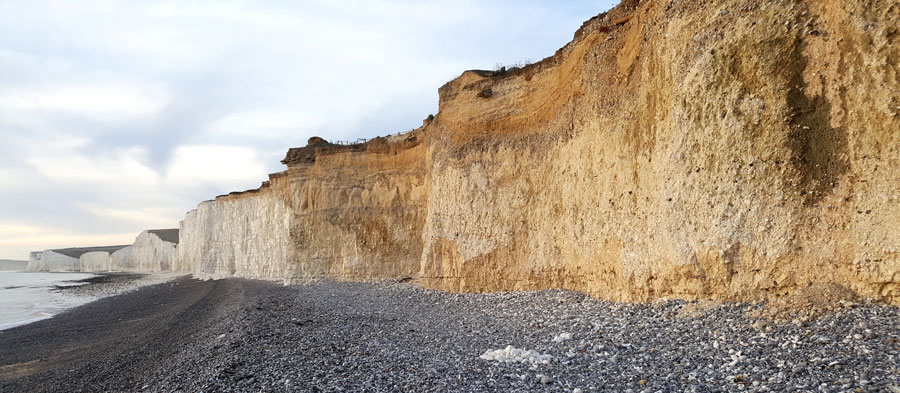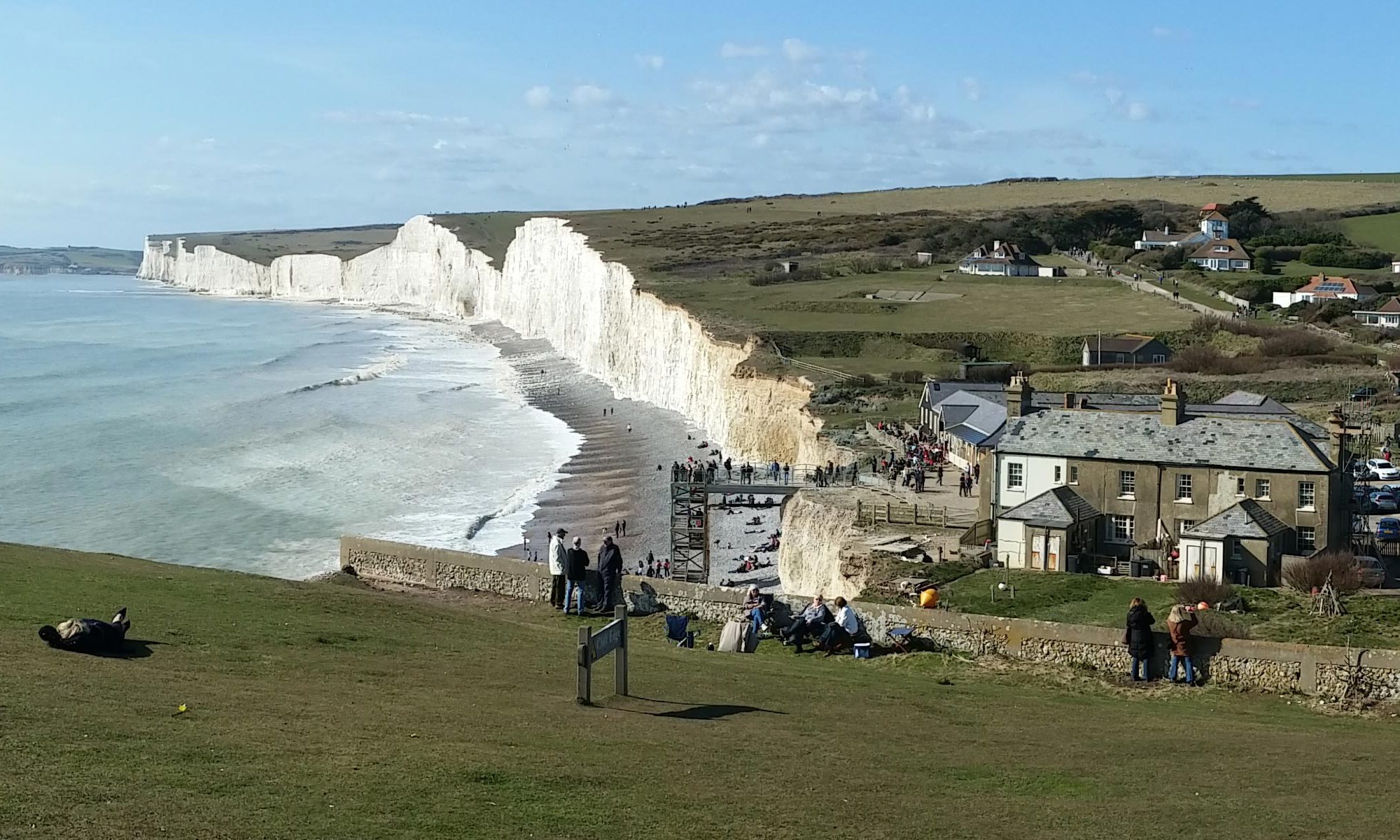
The chalk cliffs are kept white due to the constant effect of erosion. It is happening all the time, from tiny flakes to large falls, this is how the chalk cliffs are kept clean and white.
The chalk cliffs of the Seven Sisters are crumbling at a rate of 60cm per year on average – at Birling Gap this rate of erosion is much quicker.
This doesn’t mean that there will be an actual 60cm of cliff lost each year, as coastal erosion is a ongoing process and consists of active and passive periods of erosion.
Inevitably, a large cliff fall will occur, like the one at the Seven Sisters in May, however, they could happen at any time which is why it is always important to stay away from the cliff edge.
Active and Passive Periods
When a cliff fall occurs, this is known as active period, when falls are likely and very unpredictable. This leaves a fresh dense chalk cliff face protected by thousands of tons of chalk boulders at the bottom. These boulders act as a breakwater, protecting the dense chalk rock cliff against the tide, this is a passive period.
When the tide turns and recedes, you will see that the sea is milky white, this is the chalk being dissolved by the sea. Remarkably, this happens very quickly with two tides per day which is why the boulders will reduce and the protection at the base of the cliffs will no longer protect them.
Over time cracks form within the chalk cliffs and they will be constantly lashed by wind and rain which will drive the moisture further into the cliff face. Over the winter the water in the cracks freezes and expands enlarging the cracks and eventually turning them into fissures. Those fissures then weaken the cliff even further until, inevitably, there is another cliff fall and the cycle repeats itself, over and over again.
Coombe Rock
Having carried out extensive research on cliff falls at the Seven Sisters and Beachy Head, the average rate of erosion works out around 60cm per year – at Birling Gap the rate of erosion is faster and this is due to the type of rock the cliffs are made of, Coombe Rock.
Coombe Rock is a gravel, a mixture of angular fragments of flint and chalk within a clay silt. This is much softer than chalk and therefore erodes more quickly.
While there might not be a cliff fall for years, you may get tens of metres of cliff fall at a time.
It is suggested that as global warming increases and the unpredictability of the weather continues, this rate of erosion may increase.
Did you know?
A land bridge originally connected the UK to France and it was the result of a flood from the North Sea that gave us the English Channel? You can read more in the History of the Chalk Cliffs.
